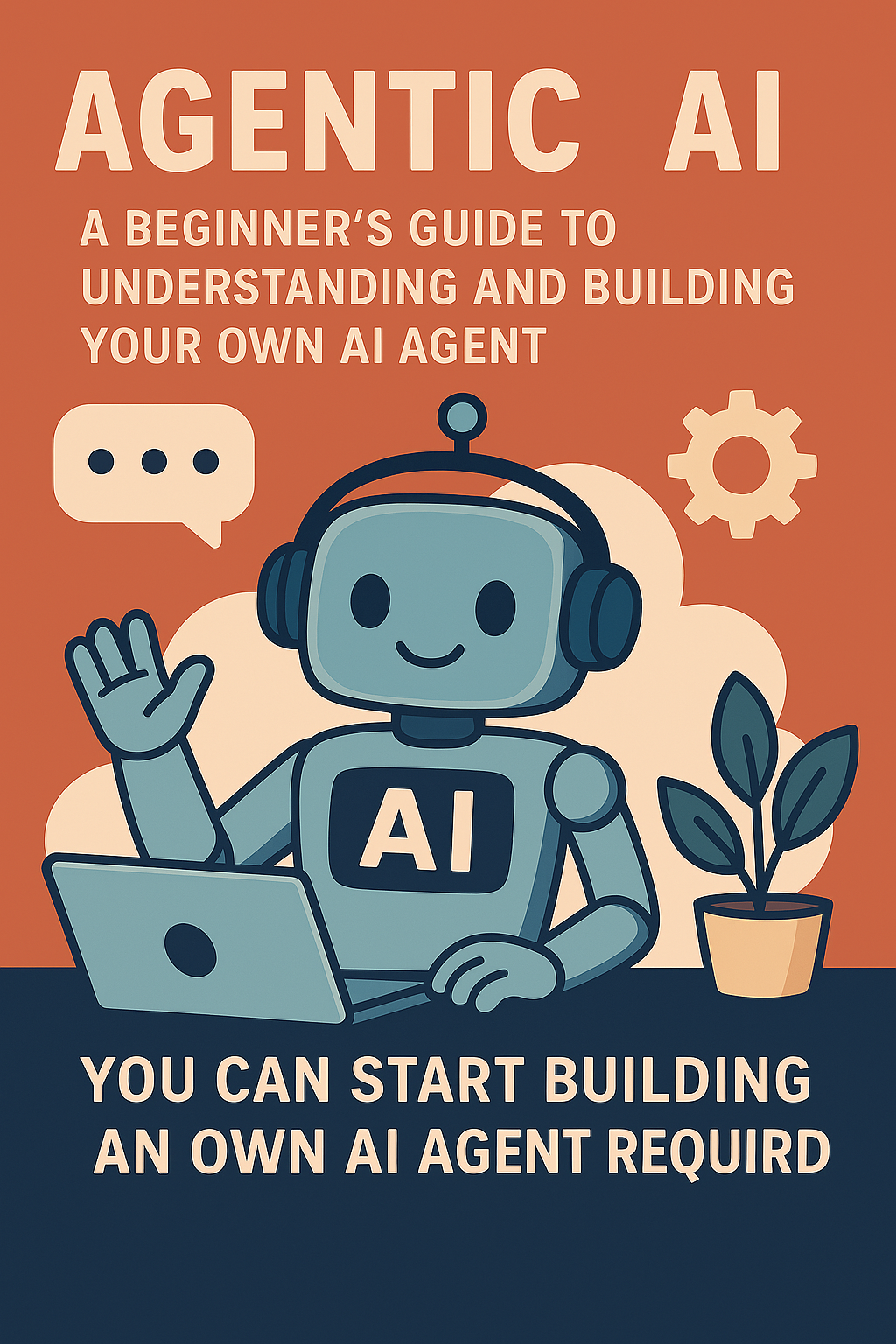Introduction
Artificial Intelligence (AI) is no longer just a futuristic concept—it’s here, and it’s evolving rapidly. One of the most exciting developments in AI is Agentic AI, a type of AI that can autonomously perform tasks, make decisions, and even learn from its experiences.
If you’ve ever used ChatGPT, Google Assistant, or Alexa, you’ve interacted with basic AI. But Agentic AI goes further—it doesn’t just respond to commands; it plans, executes, and adapts like a digital assistant with a mind of its own.
In this guide, we’ll break down:
- What Agentic AI is (in simple terms)
- How it differs from traditional AI
- Real-world examples of Agentic AI in action
- How you can start building your own AI agent (no coding experience required at first!)
- Ways to use Agentic AI in daily life
By the end, you’ll have a clear understanding of how Agentic AI works and how you can experiment with it—even if you’re a complete beginner.

1. What Is Agentic AI?
AI vs. Agentic AI
- Traditional AI (Like ChatGPT or Siri):
- Responds to direct commands.
- Follows pre-programmed rules.
- Doesn’t take initiative—it waits for instructions.
- Agentic AI:
- Acts autonomously (e.g., schedules meetings, negotiates deals, or manages tasks without being told).
- Learns from interactions (gets better over time).
- Makes decisions based on goals (like a human assistant).
A Simple Analogy
Imagine a smart home assistant:
- A traditional AI turns lights on/off when you ask.
- An Agentic AI notices you always dim lights at 8 PM and starts doing it automatically—then adjusts if you change habits.
2. How Does Agentic AI Work?
Agentic AI relies on three key components:
- Perception – It gathers data (text, voice, images, sensors).
- Decision-Making – It analyzes information and chooses actions.
- Execution – It carries out tasks (sending emails, adjusting settings, etc.).
Example: An AI Personal Shopper
- Perception: Scans your past purchases and preferences.
- Decision-Making: Finds the best deals based on your budget.
- Execution: Buys items automatically (if you allow it).
3. Real-World Examples of Agentic AI
A. AI Customer Support Agents
- Instead of just answering FAQs, they resolve complaints, process refunds, and escalate issues—all without human intervention.
B. Self-Driving Cars
- They don’t just follow GPS; they navigate traffic, avoid obstacles, and make real-time decisions.
C. AI Stock Traders
- These bots analyze markets, predict trends, and execute trades faster than humans.
D. Smart Home Managers
- Imagine an AI that orders groceries when you’re low on milk, adjusts your thermostat, and books a plumber if a leak is detected.
4. How Can You Build Your Own Agentic AI? (Step-by-Step Guide)
You don’t need to be a programmer to start experimenting with Agentic AI. Here’s how:
Step 1: Choose a Platform
- No-Code Options:
- Zapier / Make (Integromat) – Connect apps to automate workflows.
- AutoGPT / BabyAGI – Open-source AI agents you can customize.
- LangChain / Microsoft Autogen – Tools for building AI assistants.
- For Coders:
- Python + OpenAI API
- Hugging Face Transformers
Step 2: Define Your AI’s Goal
What should your AI agent do? Examples:
- Automate email sorting
- Scrape the web for research
- Control smart home devices
Step 3: Train Your AI (Even Without Coding)
- Use pre-trained models (like GPT-4) and fine-tune them.
- Teach it via examples (show it how you want tasks done).
Step 4: Test and Improve
- Start with simple tasks, then expand.
- Use feedback loops (let the AI learn from mistakes).
5. How to Use Agentic AI in Daily Life
A. Personal Productivity
- Auto-schedule meetings (AI negotiates timings with colleagues).
- Automate expense tracking (AI scans receipts and logs them).
B. Business & Side Hustles
- AI social media manager (posts content, replies to comments).
- E-commerce pricing bot (adjusts prices based on demand).
C. Smart Home Automation
- AI security monitor (detects intruders and alerts you).
- Energy optimizer (reduces bills by managing usage).
6. Risks & Ethical Considerations
While Agentic AI is powerful, it comes with risks:
- Privacy concerns (AI needs data to learn).
- Over-reliance on automation (what if it makes a mistake?).
- Job displacement (will AI replace human roles?).
How to Stay Safe:
- Start with low-stakes tasks (like organizing files).
- Always keep human oversight (don’t let AI act unchecked).
Read about how to build your own AI with resources and tutorial videos here How to Build Agentic AI: Full Guide with Code & Tutorials
Conclusion: The Future of Agentic AI Is in Your Hands
Agentic AI is not just for tech giants—anyone can start experimenting with it today. Whether you want a personal assistant, a business tool, or a smart home upgrade, the possibilities are endless.
Next Steps:
- Try a no-code AI builder (like AutoGPT or Zapier).
- Define a simple task for your AI to handle.
- Expand gradually as you gain confidence.
The age of autonomous AI helpers is here—will you be part of it?